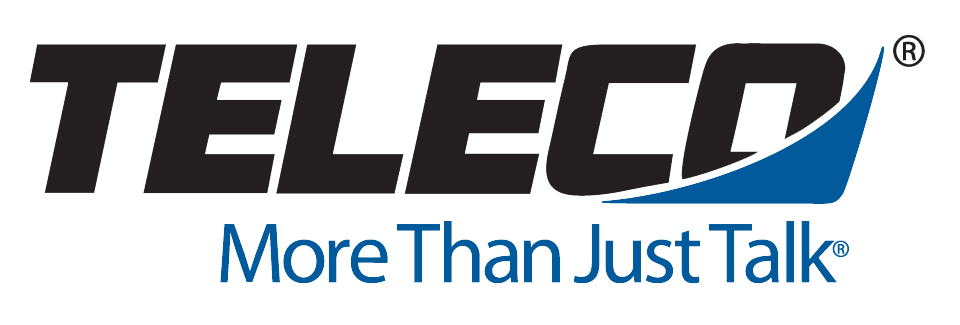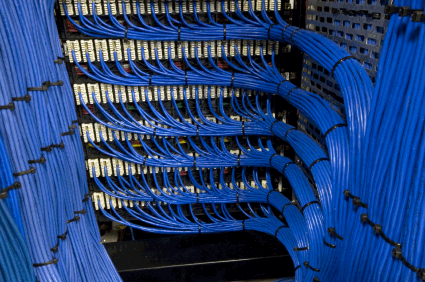When planning and designing your business telephone systems, your vendor will be charged with structuring your cabling. As part of a unified communications infrastructure, this is a very important part of your system.
If you ever want to make changes or additions to your data center, then you have got to focus on flexible and scalable structured cabling. Having a well-planned, organized cable strategy is crucial during the periods of installation and maintenance.
Cabling Infrastructure Defined
A cable system is like a giant network of roads that carries data and voice communication to its end users. As you can imagine, the structure of your cabling infrastructure is very important to the end service.
If the ‘roads’ are full of potholes and bumps the voice and data packets will not have a smooth journey and will degrade along the way. You must ensure that when your vendor installs your new business telephone system, the structured cabling is done to perfection.
They are basic building blocks of a good system—get them wrong, and you will never stop tending to problems. It does not matter how much bigger and more impressive you make the front-end system, your cabling infrastructure will never give you the performance you need if it’s not done correctly.
A cabling crew needs to be brought in to have a look at your existing cable infrastructure. If it is too out-dated or incorrectly installed, a plan has to be made. There is simply no point in adding a new business telephone system to a cabling structure that will not work.
Building a network is difficult enough, but there are several different types of networking cable that can be chosen and used in your system. You need to discuss your options with the cabling crew foreman to see if you can build a structure that helps you maintain a quality business telephone system.
Cabling infrastructure is just as important to your system as the hardware or software that you will be using, or the services you will be receiving from your maintenance vendor. Focus on this chapter and learn all you can about building a quality network of cables.
Why is Proper Cabling Infrastructure Important?
Think of cabling infrastructure as the foundation of everything. Without it, you cannot hope to transport voice or data packets anywhere. You can also think of structured cabling as the circulatory system in the body of your telephone hardware.
The data center is the area that processes, routes and stores data in your network. It is important that you maximize your network efficiency—due to the increasing demands of modern day business applications. Every second, a new technology is being replaced with something better. There are data-intense applications that need to be utilized by this network in order to help you give your clients a better quality of service.
That is part of the reason why cabling infrastructure is so important. It is really the neural network that connects the brain to the body. Features like data center rack space, cable pathways, installation, maintenance and cooling are also becoming increasingly important to businesses.
You need to design your cabling infrastructure with a competitive advantage and lower cost of ownership to make it worthwhile. Higher speeds will be needed in the future for all data centers. If you can design your cable infrastructure to handle the mounting need for faster information delivery and more reliable connections—you will have done well.
Then the opposite is also true. An average or poorly designed cabling infrastructure can destroy your business. It will degrade network performance, losing as much as 5% packet information on transfer. This means you will get dropped calls, missing data from file transfers and hassles that will never end.
Expect rapid changes in the future to networks and structured cabling. This is why it is important that you have the latest designs. Technology is moving at such a blistering speed that you want to be in compliance with the latest tech as it progresses. Otherwise your out-dated, slow networks will eventually kill your business.
For call centers and sales companies that rely on their network capabilities, this is not a joke. The larger your need for reliable, secure and high performance network speeds, the more you should focus on your cabling infrastructure. It all starts here for you.
Choosing Who Installs Your Cabling Infrastructure
This leads us to the question – who is going to install your cabling infrastructure? First of all, it needs to be someone highly qualified in structured cabling solutions. You should put a fair amount of research into uncovering what the best possible cabling infrastructure would be for your company.
That way you have something to measure against the professional advice that you will be getting from your chosen expert. There is no point in spending money on new equipment, hardware, software and other telephony devices when your cabling system is going to be handled by ‘anyone.’
You can hire an expert to design your company’s very own network cabling infrastructure, if that is the route you want to take. Otherwise your cable company will be doing the installation for you. Be very careful of these ‘cable companies’—even if you’ve spoken at length with the superintendent, they are often not even on-site when the cabling is done.
This is exactly why so many buildings suffer from poor cabling infrastructures. Many of these companies even subcontract the work to third party companies, that do a tacky job. To make the most profit, the work is outsourced to a barely functional company that does the cabling for them. This is not what you want to have happen.
It is a better idea to choose a local company that has technicians you can speak to and work with about structured cabling. This is how large Fortune 500 companies ensure that all of their network requirements are adequately met.
An IT manager may also be useful if you have one, and they can work with the technicians to design and build your cabling infrastructure. Always check for the right qualifications and for proof of past work in any contractor that you hire. But be mindful that qualifications don’t necessarily mean they can do good work.
It is an even better idea to get the telephone systems vendor involved in the process. Then they can work together to ensure that you get maximum system functionality from the networks. This high performance strategy will be exactly what helps your business grow in leaps and bounds over the next few years.
Guidelines To Structured Cabling Infrastructure
Structured cabling infrastructure is just as important as the structure of the other ‘main’ utilities like water, heating and electricity. Interruptions to this infrastructure can have unpleasant, even costly consequences.
That is why it is important that structured cabling uses high performance components, and offers long-term support and delivery for high volume networks, like the business telephone system you are planning to install.
- A buildings generic cabling structure can be broken down into campus distribution, building distribution, floor distribution and telecommunications outlet. The campus backbone cabling subsystem comes first, then the building backbone cabling subsystem and the horizontal cabling subsystem.
- The amount and variation of subsystems in a structured cabling system depends on the size and location of the building. It also depends on the intention or strategy of the user that is installing the system.
- There is usually one campus distribution per location, one building distribution per building and one or more floor distribution areas per floor space.
- The campus backbone system is a cabling system that provides data and telecommunication services between buildings. It connects the building distribution by way of fiber-optic cabling.
- The building backbone cabling system provides telecommunication services between the floors in a building. It connects building distribution with floor distribution and has copper links and fiber-optic cables.
- The horizontal cabling system provides telecommunication services from the floor distribution to the telecommunications outlet. It is always copper cabling, but fiber-optic cables are also sometimes used.
A well-planned structured cabling infrastructure is key to any successful business telephone system. You could say that it is impossible to install an effective system if these cabling solutions are not first checked, fixed or re-installed. Get the honest opinion of your telephone systems vendor, they will know if your cabling needs to be restructured.
In the meantime, take a closer look at the cord structures used in the building design. These cords will be fixed again and again by your maintenance contractors, so it is worthwhile to ensure that they are in a usable condition. It is a good thing that most cables can be mixed and matched, and they will work together to give you the performance you need.
How to Improve This Infrastructure
There are many ways to improve a structured cabling system. Your first move will be to check with the vendor whether or not the existing cable system in your building is any good. From there, you can take steps to assess what needs to happen, and how much it will cost to have a proper cable infrastructure installed.
- Label your cords: Cabling systems can become very complicated, especially when different companies have installed them. A good way to eliminate confusion is to make sure that your vendor labels every cord. That way you will be able to see where they go, and which panels they are connected to.
- Quality should be a central focus: Substandard installations for cabling are actually quite common. It can be frustrating for a new company to arrive, only to find out that there is poor installation throughout the entire data center. Cheap cabling companies are not the answer.
- Manage your cords correctly: Proper cord management is key to getting maintenance and repair guys in and out in no time at all. Make sure that you keep patch cords organized so that they can be found at a glance. Otherwise the maintenance men will have to spend ages digging in folds of cords to find something specific.
- Always choose an appropriate design: Any old design will not do in the case of structured cabling. A well-planned design will help keep things moving forward when issues do occur and the data center does need to be cracked open. If you choose cheap design over quality, you will never stop having endless issues with your cabling infrastructure. It is the very last thing you want to deal with.
Quality cabling infrastructure improves network speed and guarantees that you get the maximum proficiency possible from the system you have chosen. Remember that hardware, software and cabling are the three most important elements of your system.
You can also have a chat with your vendor and see if they have any ideas on how to improve your current or potential cabling infrastructure. Mention that you want to make it easy for maintenance people to fix problems, and that it is very important to get all the network performance you can from the structure.
Choosing Which Cabling Infrastructure To Use
When it becomes time to choose which cable infrastructure will best suit your needs, a few things need to happen first. You need to do some personal research into cabling infrastructure, and you need to consult your vendor for advice.
Once you have done this, you will be able to make an educated decision on your cabling infrastructure. There are several different network cables that you can choose from:
- Twisted-pair cables
- Fiber-optic cables
- Stacking cables
- Thin coaxial cables / thick coaxial cables
- AUI cables
Existing Installation
Existing installations depend on what cable types have already been installed. If they can provide the correct bandwidth and capacity for your business telephone system, then there is no problem. You can also mix cable types—running older coaxial cables with twisted-pair cables, if you need too. Otherwise, it is best to install cables in the new style.
New Installation
New installations require 100 meter lengths of 5 twisted-pair cables, with fiber-optic cabling for long backbone connections. Stacking cables are better for short backbone connections inside wiring closets.
Twisted-pair and fiber-optic cables allow you to upgrade in a very scalable manner, from an output of 10mbps to 100mbps network. Because telephone maintenance crews are used to working with twisted-pair cables, they can install the system in a similar manner to how they install the actual telephone system.
Troubleshooting a biaxial cabling system is far more complicated than doing the same thing with a twisted-pair network. If there is a lot of electrical noise, you should use fiber-optic cabling instead. But your structured cabling crew should let you know about this.
Twisted-pair cables are also more reliable and easier to work with than coaxial cables. This is because you can unplug a twisted-pair cable and effect only one connection, but if you unplug a coaxial cable you could bring down the entire system.
Keep in mind that as you are planning your ideal cabling infrastructure, you need to keep later expansion at the forefront of your efforts. Installations are costly, but the cables themselves are very cheap.
Foundation Cabling and Networking
All telecommunications cabling and networking is the foundation for your business telephone system. There are many subsystems that work together to form a campus system. These data centers are usually run under raised flooring or in special areas in the building.
- The entrance facility: This is the point where the exterior plant cables and hardware are brought into the building. These facilities are used for public network services and private network services. This is where carrier and customer meet.
- The equipment room: This is where the telecommunications equipment is kept, like the computer equipment, PBX, and video switches. In other words this is where the hardware is kept that serves users on the building premises.
- Backbone cabling: This provides connections between the telecommunications closets and the equipment rooms or entrance facilities. You will find backbone cables, cross connects, terminals, patch cords and jumpers here. Backbones also connect buildings together.
- Telecommunications closet: This is where the horizontal distribution cables are all connected to their various terminals. The cables are connected to hardware. Cross connection is used with jumpers and patch cords, that make it flexible and able to extend different services to various telecommunications users.
- Horizontal cabling: The physical media used to connect every outlet to a closet. The different types of cabling can be used for this. Every cable type has specific performance limitations, cost and size.
- Work area components: This extends the telecommunication outlets end of the horizontal cabling system to the station equipment. Filters, baluns and adapters are used to change various electronic equipment items to the structured cabling system.
This is the basic layout of a structured cabling system. The correct cabling infrastructure is incredibly important at the entry-level phase. If you can get this right, you won’t ever have to be concerned about long maintenance delays from cabling problems, or slow speeds from poor cabling performance.
The network topology is also established, as either a bus topology, a star-wired topology or a ring topology. Structured cabling was specifically designed to run anything, anywhere at any time – and it works. When you use it, you do not have to follow a set system, things will be compatible with it.


